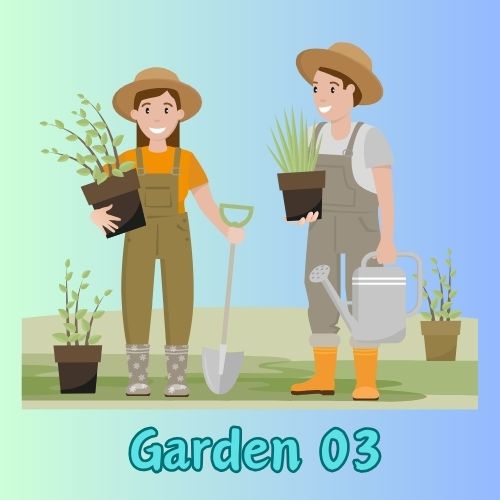Peanuts, or groundnuts (Arachis hypogaea), are not only a delicious snack but also a versatile crop that can thrive in various climates. Whether you’re a seasoned gardener or a beginner, understanding how to plant and care for peanut seeds is essential for a fruitful harvest. This article Garden 03 will cover everything you need to know about peanut seeds for planting, from selection and preparation to planting techniques and care.
Understanding Peanut Seeds
What Are Peanut Seeds?
Peanut seeds are the seeds of the peanut plant, which belong to the legume family. They develop underground, which is a unique characteristic that differentiates them from most other nuts. When planting, the seeds are actually the whole peanuts, typically unshelled and raw, that you will sow in your garden.
Types of Peanut Seeds
There are several varieties of peanut seeds, each with its unique characteristics. The two primary categories are:
- Virginia Peanuts: Known for their large size, Virginia peanuts are often used for snack foods and are characterized by their rich flavor.
- Runner Peanuts: These peanuts are commonly used for peanut butter and are known for their consistent size and high yield.
- Spanish Peanuts: These have a smaller size and a higher oil content, making them ideal for candy and snacks.
- Valencia Peanuts: These are often used for boiling and are known for their sweet flavor and tender texture.
Why Grow Peanuts?
Growing peanuts can be a rewarding endeavor for various reasons:
- Nutritional Value: Peanuts are rich in protein, healthy fats, and various vitamins and minerals, making them a nutritious addition to your diet.
- Soil Health: As a legume, peanuts have the ability to fix nitrogen in the soil, improving soil health and fertility for subsequent crops.
- Crop Rotation: Peanuts can be an excellent rotation crop, helping to break pest and disease cycles in your garden.
- Economic Potential: Peanuts can be sold fresh, roasted, or processed into products like peanut butter, making them a potentially profitable crop.
Selecting Peanut Seeds for Planting

Quality Seeds
When choosing peanut seeds for planting, it’s crucial to select high-quality seeds to ensure successful germination and growth. Look for seeds that are:
- Certified Organic: Organic seeds are free from synthetic pesticides and fertilizers, promoting healthier plants and soil.
- Disease-Resistant Varieties: Choose seeds that are known to be resistant to common peanut diseases, such as leaf spot or root rot.
- Local Varieties: If possible, opt for varieties that are well-adapted to your local climate and soil conditions.
Where to Buy Peanut Seeds
Peanut seeds for planting can be purchased from various sources:
- Local Garden Centers: Many local garden centers stock peanut seeds during the planting season.
- Online Retailers: Numerous websites specialize in seeds and can provide a wide variety of peanut seeds.
- Farm Supply Stores: Agricultural supply stores often carry seeds suitable for larger-scale planting.
Preparing for Planting
Soil Requirements
Peanuts thrive in well-draining sandy loam or loamy soil with a pH level of 6.0 to 6.5. Here’s how to prepare your soil for planting:
- Soil Testing: Conduct a soil test to determine the nutrient levels and pH. This information will help you amend the soil appropriately.
- Amending Soil: If necessary, add lime to raise the pH or sulfur to lower it. Incorporate organic matter such as compost to improve soil structure and fertility.
- Tillage: Till the soil to a depth of at least 12 inches to ensure proper aeration and drainage.
Timing
The best time to plant peanut seeds is after the last frost when soil temperatures reach about 65°F (18°C). In most regions, this falls between late spring and early summer.
Planting Peanut Seeds
Step-by-Step Planting Guide
- Row Spacing: Prepare rows spaced about 30 to 36 inches apart to allow for proper air circulation and light exposure.
- Seed Depth: Plant the seeds 1 to 2 inches deep in the soil. A depth of 1.5 inches is typically optimal for good germination.
- Seed Spacing: Space the seeds 4 to 6 inches apart within the row. This spacing will allow enough room for the plants to grow without competing for nutrients.
- Watering: After planting, water the rows gently to ensure the soil is moist but not saturated.
Germination
Peanut seeds typically germinate within 7 to 14 days, depending on soil temperature and moisture levels. Keep the soil consistently moist during this period for optimal germination.
Care and Maintenance of Peanut Plants
Once your peanut seeds have germinated and seedlings begin to emerge, it’s essential to provide the right care for healthy growth.
1. Watering
- Consistency: Peanuts require consistent moisture, especially during the flowering and pod development stages. Aim to keep the soil evenly moist but not waterlogged.
- Deep Watering: Water deeply to encourage strong root development, especially during dry spells.
2. Fertilizing
- Pre-Planting Fertilization: Incorporate a balanced fertilizer into the soil before planting, focusing on phosphorus and potassium, which support root and pod development.
- Side-Dressing: Once the plants are established, you can side-dress with a low-nitrogen fertilizer during the growing season to promote healthy growth.
3. Weeding
Regular weeding is crucial, especially during the early growth stages, as peanuts can be susceptible to competition for nutrients and water. Consider using mulch to suppress weed growth while retaining soil moisture.
4. Pest and Disease Management
Peanuts can be affected by various pests and diseases, including:
- Pests: Watch for aphids, spider mites, and nematodes. Implement integrated pest management (IPM) strategies to control these pests.
- Diseases: Common diseases include leaf spot and root rot. Crop rotation and proper spacing can help reduce disease incidence.
Harvesting Peanut Plants
When to Harvest
Peanuts are ready for harvest when the leaves begin to yellow, and the pods are firm. Typically, this occurs 120 to 150 days after planting. To determine if the peanuts are ready, gently dig around the plants and check the pods.
How to Harvest
- Lifting the Plants: Use a garden fork or spade to carefully lift the plants from the soil. Be cautious not to damage the pods.
- Removing Soil: Shake off excess soil from the roots and pods.
- Drying the Peanuts: Lay the harvested peanuts in a single layer in a dry, ventilated area. Allow them to dry for several days to a week.
Storing Peanuts
Once dried, store your peanuts in a cool, dry place. They can be kept in mesh bags or paper sacks to allow for airflow. If you plan to shell them, store the unshelled peanuts in a cool, dark place to maintain freshness.
Frequently Asked Questions About Peanut Seeds for Planting
1. Can I plant store-bought peanuts?
Yes, but ensure they are raw and unsalted. Many store-bought peanuts have been roasted, which prevents them from germinating. Look for organic raw peanuts if you plan to plant them.
2. How much sunlight do peanuts need?
Peanuts require full sun, which means they need at least 6 to 8 hours of direct sunlight each day for optimal growth.
3. Do peanuts need special soil conditions?
Peanuts prefer well-draining, sandy loam soils with a slightly acidic to neutral pH. They can adapt to various soil types, but poor drainage can lead to root rot.
4. Can I grow peanuts in containers?
Yes, peanuts can be grown in containers, but make sure to choose a large container (at least 5 gallons) with drainage holes. This allows for adequate root space and drainage.
5. How do I know when my peanuts are ready to harvest?
When the leaves of the peanut plant begin to yellow and fall off, it’s usually a sign that the peanuts are ready to harvest. Check the pods for firmness, and when in doubt, gently dig around the plants to check their progress.
Conclusion
Growing peanuts from seeds can be a gratifying and educational experience, offering delicious rewards at the end of the season. With proper care and attention, you can successfully cultivate peanuts in your garden. By following the guidelines outlined in this article on peanut seeds for planting, you can ensure a thriving peanut crop that enriches both your garden and your table. Whether you enjoy them roasted, in a snack mix, or as creamy peanut butter, the effort you put into growing peanuts will undoubtedly pay off. Happy gardening!





